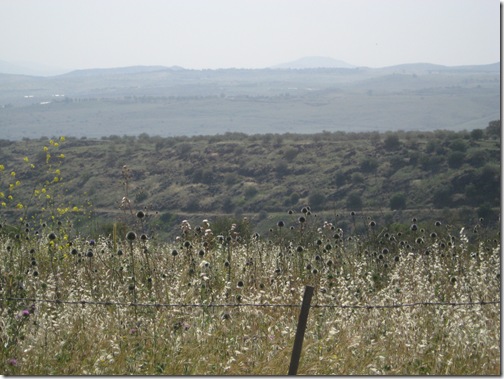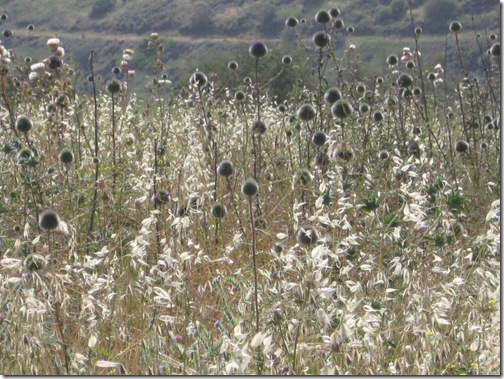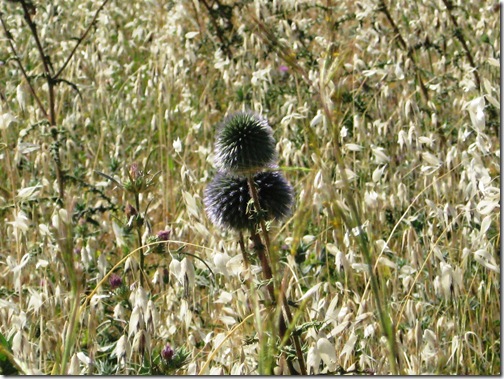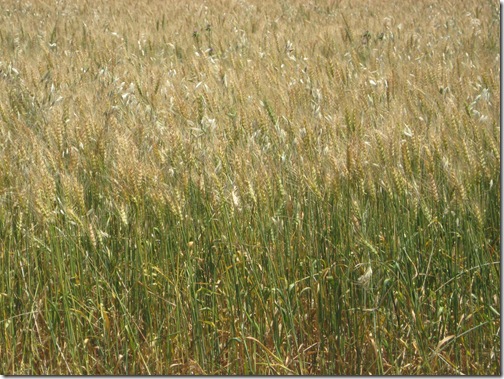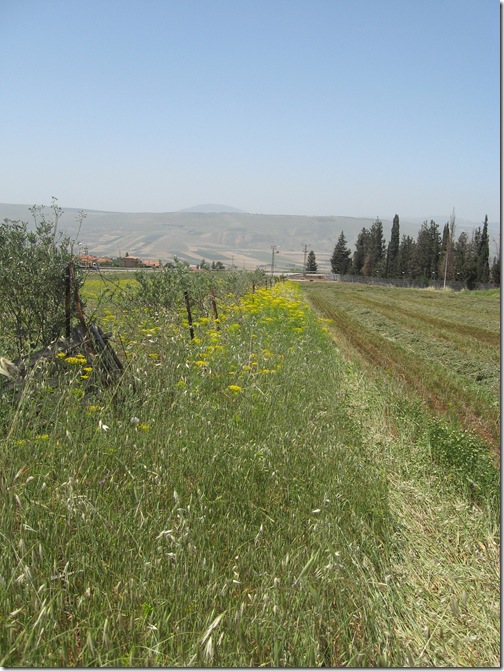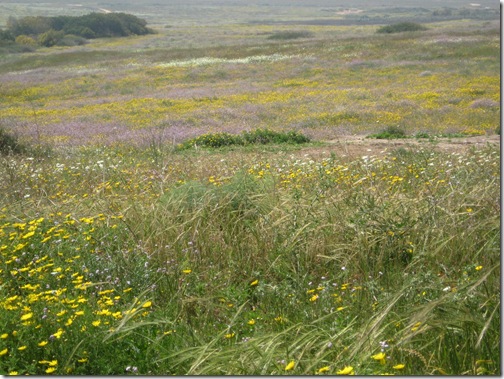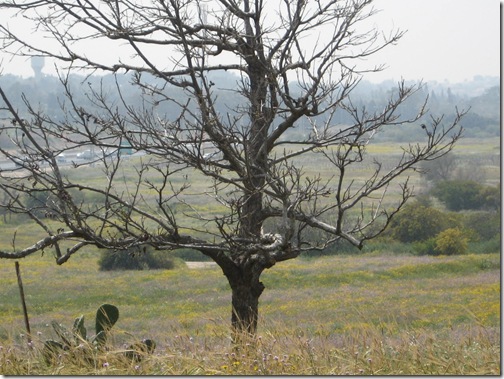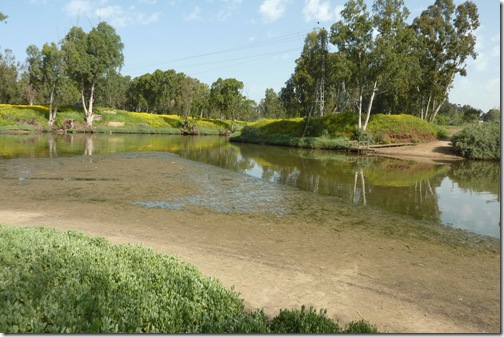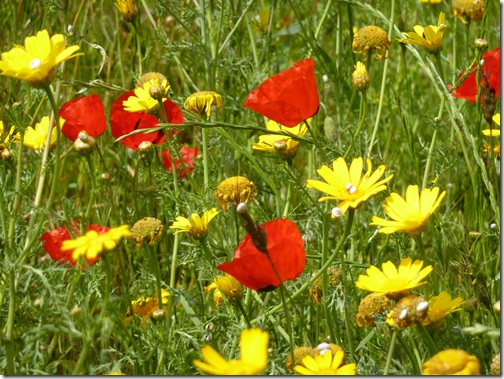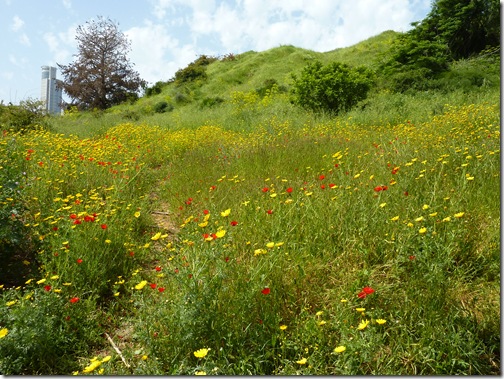Gardening in Israel: By the time June comes along, you might as well call it a wrap….except for the once in a while deadheading, pruning (which I’m always a bit shocked at how vigorously it’s done throughout the summer here) and making sure that watering systems are intact.
From mid-winter until mid-spring, the blooms are lush, the grass is green and the rains are ‘gifts from the Gods’. Cities and suburbs are flush with flowers while the wildflowers sweep the landscape with utter simplicity and magnificence.
Because of Israel’s geographical location at the junction of three continents, it has a wide diversity of plants; 2600 plus types and over 135 varieties of butterflies. Alpine species sweep the northern mountain slopes while Saharan species thrive in the south. Some common winter/spring wildflowers are cyclamens, anemones, blue lupines, yellow corn marigolds, poppies, and echinops.
The 2 photos below: fallow land and dunes leading to the sea abutting a major highway about 2 miles from Tel Aviv
Although I row several times a week on a section of the Hayarkon River close to the center of the city (the largest river in Israel…27.5 km), I had never been to this section of the park. The photos below were taken at Jarisa Mound where the remnants of a working mill which consisted of 11 pairs of gristmills are still intact.
“Several examinations carried out at the site revealed that an ancient market was operating nearby the mill. Scattered over the site are the remains of 3 gristmills from the 19th century. Those gristmills were built over the remains of an older building. An older mill from the Ottoman Period was operating at the site as well. It’s possible that the mills were operating at the site already during the Roman Period. A dam, later used as a base for the construction of a more modern one, was built on the river. Today it functions as a passage between the two banks of the river. The site is called “Sheva Tachanot” (Seven Mills in English) due to the fact that one of the buildings contained seven grinding facilities. The site was active until the beginning of the 1940’s. Examinations regarding the preservation status and the revealing of the remains belonging to the mills, which were covered by mud and soil as a result of floods over the years, were carried out in 2001. A plan to excavate the remains and reconstruct buildings at the site in the future have been finalized.”
** COURTESY OF: Tel Aviv Info.
For those of you who have been too timid to allocate an unused area of your back or side yard for a wildflower meadow, I hope these photos will give you the courage and inspiration to do it. And for those of you who dare, how about getting rid of the grass in your front yard and creating a wildflower meadow that will rock the neighborhood? What could be more fun, playful, beautiful and great for the environment? Don’t you think it’s time to shake up the status quo of the American public’s obsession with neatly coiffed front yards and manicured lawns?
Note: A good source for a wide range of meadow mixes and native plants is Prairie Natives.

